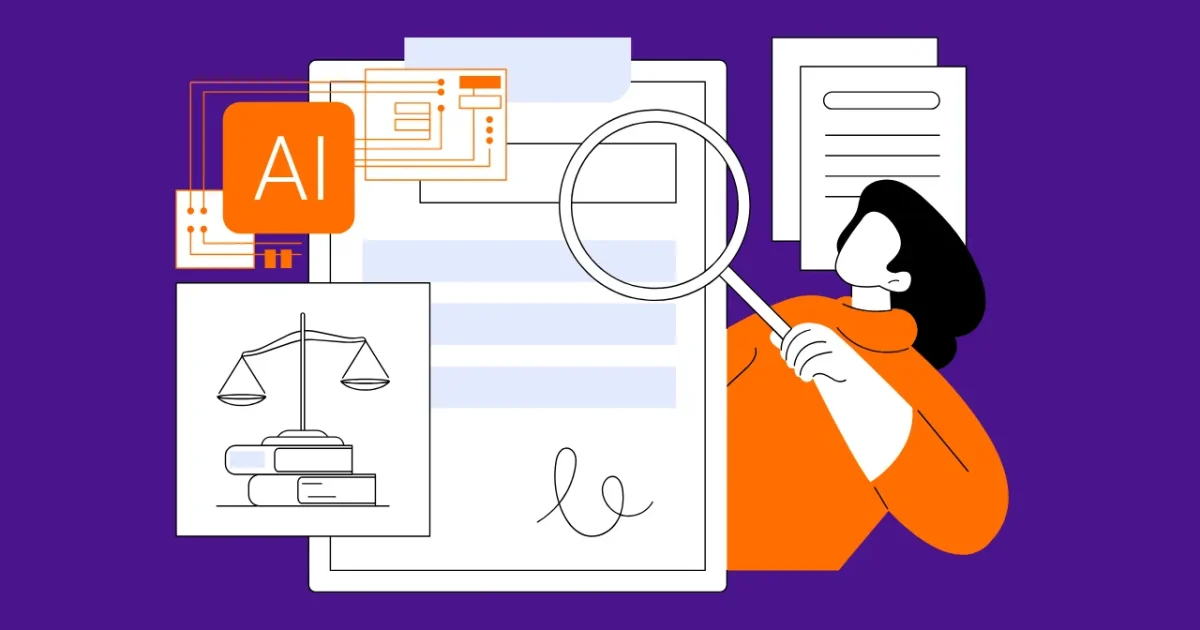Spending hours on repetitive contract drafting? As a corporate counsel or law firm associate, you know the pain of slow, manual processes. AI contract creation features can change that, slashing drafting time by up to 90%. This article breaks down seven must-have AI features to supercharge your contract creation in 2025, making your work faster and smarter.
Why AI Contract Creation Matters
Drafting contracts is tedious. You’re stuck copying clauses, checking for errors, and formatting documents. AI contract creation features automate these tasks, saving time and reducing mistakes. According to the American Bar Association’s 2024 Legal Technology Survey Report, 30% of lawyers now use AI tools, with contract drafting being a top use case. Think of AI as your digital paralegal—it handles the grunt work so you can focus on strategy.
1. Clause Library AI: Your Instant Clause Generator
A clause library AI is like a digital filing cabinet that suggests pre-approved clauses instantly. Instead of searching through old contracts, the AI pulls relevant clauses based on your needs. For example, platforms like Casetext CoCounsel scan your firm’s contracts and suggest clauses for a non-disclosure agreement in seconds.
“Clause libraries powered by AI save us hours. We get consistent, vetted language without digging through files.” — Shivam Verma, Associate Legal Counsel, SUN Mobility
Practical Example: Imagine drafting a vendor contract. You type “confidentiality clause,” and the AI suggests three pre-approved options, tailored to your firm’s style.
2. Contract Drafting Automation: First Drafts in Minutes
Contract drafting automation uses AI to create full contract drafts from simple inputs. Tools like Spellbook let you input key terms (e.g., “vendor agreement, $50,000, 12-month term”), and the AI generates a draft. This cuts drafting time by up to 90%.
Practical Example: For a service agreement, input the parties’ names and terms, and the AI builds a draft with standard clauses, ready for your review.
3. Automated Redlining: Track Changes with Ease
Automated redlining highlights changes and suggests edits in real-time. Think of it as a super-smart editor that compares drafts and flags risky clauses. Tools like DraftWise use AI to spot inconsistencies, ensuring your edits are precise.
Practical Example: You receive a contract from opposing counsel. The AI compares it to your template, highlighting a liability clause that needs tweaking, saving you manual review time.
4. AI Template Generation: Custom Templates on Demand
AI template generation creates custom contract templates based on your firm’s needs. Platforms like Harvey let you build templates for specific deals, like M&A or leasing agreements, with minimal effort.
“AI template generation is a game-changer. It’s like having a custom tailor for contracts.” — Bivek Sharma, Chief AI Officer, PwC UK
Practical Example: Need a template for a software licensing deal? Input the deal type, and the AI generates a template with your firm’s preferred terms.
5. Contract Lifecycle Management (CLM) Features: End-to-End Control
CLM features manage contracts from creation to signing. AI-powered CLM tools, like SpotDraft, track deadlines, store contracts, and analyze risks in one platform. This is like having a project manager for every contract.
Practical Example: Your firm handles 50 vendor contracts. The AI flags expiring contracts, suggests renewal terms, and stores all versions in a searchable database.
6. Natural Language Processing (NLP): Understand and Simplify
NLP in AI tools reads and interprets contract text like a human. It translates complex jargon into plain language or summarizes long contracts. Tools like Lexis+ AI use NLP to make contracts easier to understand.
Practical Example: A 20-page lease agreement is summarized into key points, like rent terms and termination clauses, in under a minute.
7. Predictive Coding: Spot Risks Before They Hit
Predictive coding uses AI to analyze contracts for risks, like unfavorable terms or compliance issues. Tools like Thomson Reuters CoCounsel flag potential problems before you finalize a contract.
“Predictive coding catches risks we’d miss. It’s like a second set of eyes.” — Scott Bailey, Director of Research, Eversheds Sutherland
Practical Example: Drafting a merger agreement? The AI flags a clause that could violate GDPR, saving you from costly compliance issues.
Choosing the Best AI Contract Creation Tool
| Tool Name | Key Feature | Best For | Price (2025) | ROI | Cons/Issues |
|---|---|---|---|---|---|
| Casetext CoCounsel | Clause Library AI | Solo/Small Firms | $50-$150/month | 90% faster research | Limited integrations |
| Spellbook | Contract Drafting Automation | Mid-sized Firms | $99/month | 90% faster drafts | Learning curve for new users |
| DraftWise | Automated Redlining | Large Firms | Custom pricing | 50% faster reviews | High cost for small firms |
| Harvey | AI Template Generation | Corporate Counsel | $200/month | Custom templates in seconds | Requires training for optimal use |
| SpotDraft | CLM Features | In-house Teams | $500/month | 80% faster lifecycle management | Expensive for solo practitioners |
| Lexis+ AI | NLP for Summarization | Research-heavy Firms | $75-$200/month | 60% faster analysis | May need human oversight |
| Thomson Reuters CoCounsel | Predictive Coding | Compliance-focused Firms | $100-$300/month | Reduces compliance risks | Complex setup for beginners |
Goal: Streamline contract creation with AI tools that fit your firm’s needs.
How to Implement AI Contract Creation Features: A Step-by-Step Guide
- Assess Your Needs: Identify repetitive tasks, like drafting or reviewing contracts, that slow you down.
- Choose a Tool: Use the comparison table to pick a tool that matches your firm’s size and budget.
- Run a Pilot: Test the tool with a small team. For example, use Spellbook to draft five contracts and track time saved.
- Train Your Team: Use provider tutorials to teach staff how to use features like clause libraries or redlining.
- Track Metrics: Measure time saved and error reduction. For example, SpotDraft’s analytics can show faster turnaround times.
- Scale Up: Roll out the tool firm-wide after refining workflows based on pilot feedback.
Time Savings by AI Feature
Below is a bar chart showing average time savings per task using AI contract creation features, based on 2025 industry data.
Looking Ahead: The Future of AI in Contract Creation
AI contract creation features are transforming legal work. By automating repetitive tasks, these tools let you focus on high-value work like client strategy. As AI adoption grows (79% of lawyers now use AI), staying ahead means picking tools that fit your workflow and scale with your firm. Download our Feature Checklist for Evaluating AI Drafting Software to compare tools and start saving time today.
Frequently Asked Questions (FAQs)
What are AI contract creation features?
AI contract creation features use machine learning and natural language processing to automate tasks like drafting, reviewing, and managing contracts. They save time and reduce errors.
How do AI tools ensure contract accuracy?
Tools like Thomson Reuters CoCounsel use predictive coding to flag risks and verify clauses, but human oversight is key to avoid errors like AI hallucinations.
Are AI contract tools secure for client data?
Most platforms, like Clio Duo, use encryption and secure environments to protect client data, but always check the provider’s security certifications.
How much time can AI save in contract drafting?
AI can save 1-10 hours per week, depending on the tool. For example, Spellbook cuts drafting time by 90%.
Which AI tool is best for small firms?
Casetext CoCounsel is great for small firms due to its low cost and powerful clause library features.




